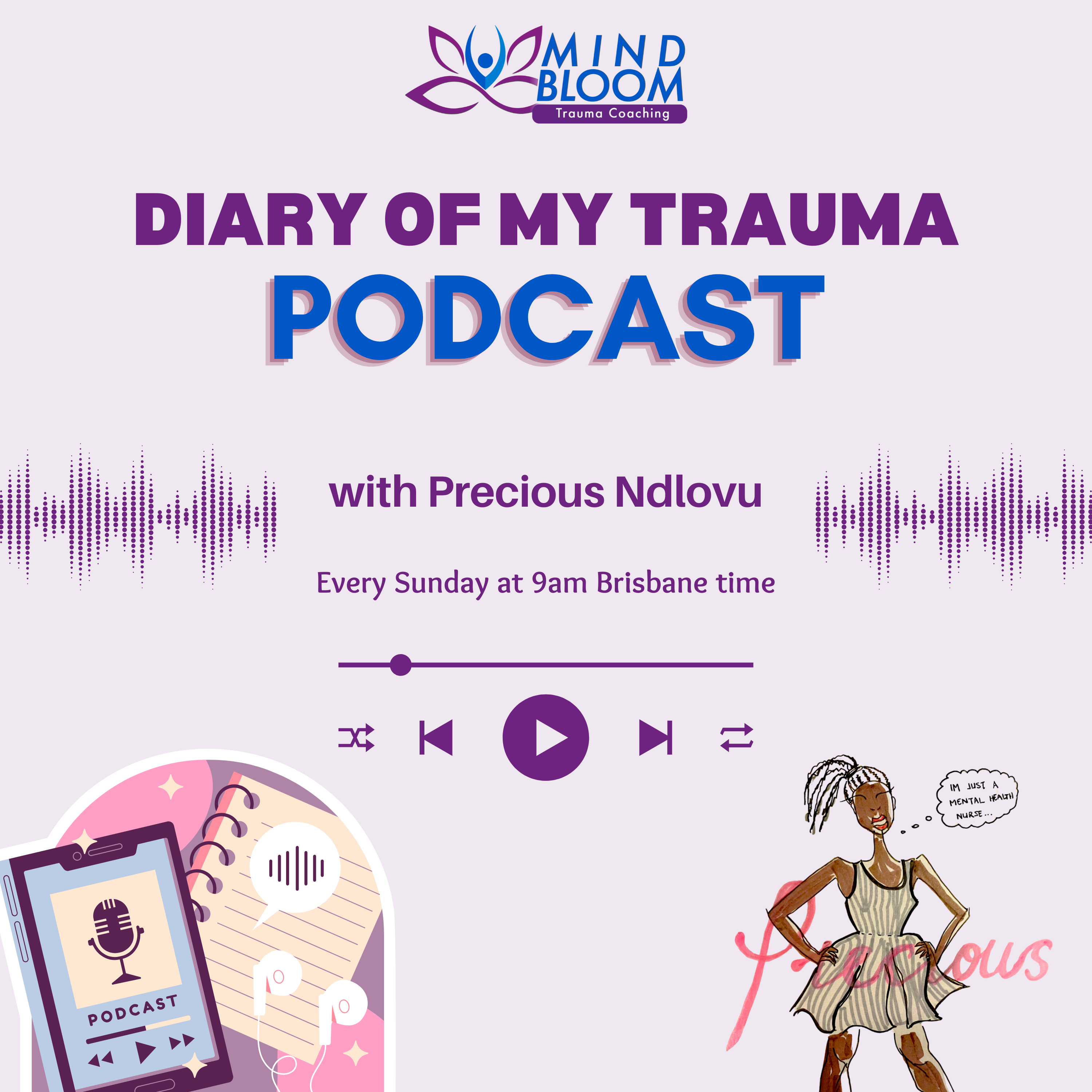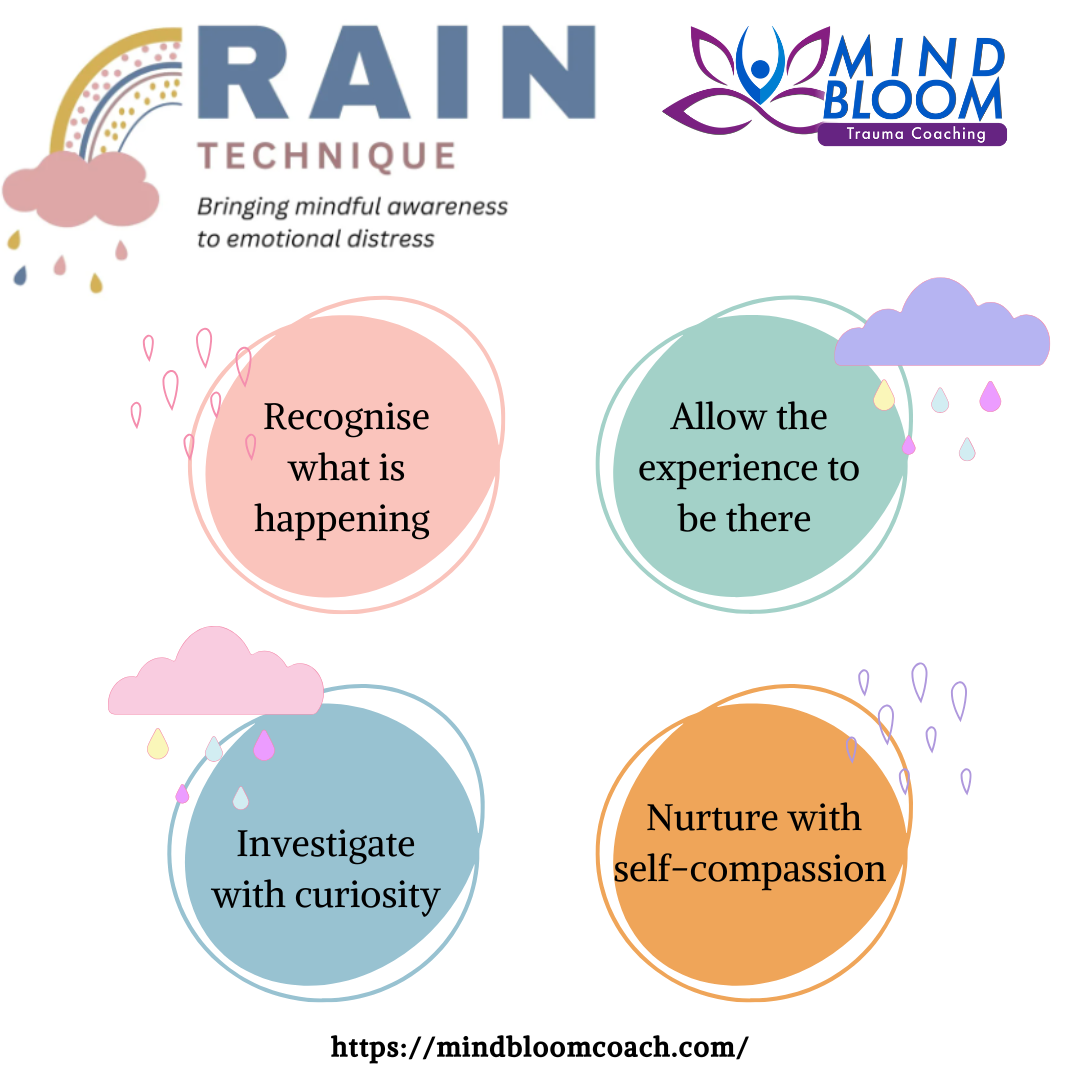Emotions can be overwhelming, particularly when they stem from past traumas or unresolved experiences. Finding a way to address and process these feelings can feel like an uphill battle, but mindfulness practices like the RAIN technique provide a gentle, structured method for emotional healing. This approach, popularised by meditation teacher Tara Brach, encourages individuals to meet their emotions with curiosity and compassion, cultivating a healthier relationship with even the most challenging feelings.
The RAIN technique is particularly valuable for those navigating trauma, as it fosters self-awareness and creates a safe space for processing difficult emotions. By guiding individuals to explore their inner landscape without judgment, RAIN helps to break the cycle of avoidance or resistance that often accompanies emotional pain. Let’s take a deeper look at the four steps of RAIN and how each step supports emotional growth and healing:
Recognise what is happening
The first step is to pause and acknowledge the emotions or thoughts you’re experiencing. Naming what you’re feeling is a powerful act of awareness. For example, you might say, “I’m feeling angry and overwhelmed,” or “There’s a sense of sadness in me right now.” This step is about bringing what’s swirling in your mind into focus, helping you to ground yourself in the present moment.
Allow the experience to be there
Once you’ve identified the emotion, the next step is to allow it to exist without pushing it away or trying to change it. This doesn’t mean you agree with or approve of the feeling—it simply means you are making space for it. Often, the act of allowing can feel like a relief, as it removes the pressure to control or suppress what’s arising within you.
Investigate with curiosity
Here’s where the technique really begins to unravel emotional knots. With kindness and a genuine sense of curiosity, explore the feeling further. Ask yourself questions like, “What’s triggering this emotion?” or “Where do I feel this in my body?” This step is not about overthinking or judging—it’s about understanding the deeper layers of your experience with compassion and interest.
Nurture with self-compassion
The final step is to offer yourself care and understanding. Imagine how you might comfort a close friend who is feeling the same way, and extend that same warmth to yourself. This could involve speaking to yourself in a soothing tone, placing a hand on your heart, or visualising a sense of safety surrounding you. Nurturing yourself in this way reminds you that it’s okay to feel what you feel and that you are deserving of kindness.
When practiced regularly, the RAIN technique can become a trusted tool for emotional resilience. For those working through trauma, it can help shift the way you interact with painful memories or triggers, allowing you to respond thoughtfully rather than reacting from a place of distress. Over time, the practice can help you reclaim a sense of inner peace and balance.
A trauma-informed perspective on RAIN
For individuals who have experienced trauma, the RAIN technique offers a mindful way to build trust with yourself. Trauma often disconnects us from our emotions or causes us to feel unsafe in our own bodies. By approaching emotions with gentleness and curiosity, RAIN helps to repair this connection and foster a sense of safety. It’s important to note, however, that working with trauma can be complex, and some individuals may benefit from the guidance of a coach or therapist as they begin this practice.
A practical way to start
You don’t need a lot of time to begin using the RAIN technique—just a quiet moment and a willingness to engage with yourself. Try setting aside five or ten minutes in your day to sit with your emotions. Some people find it helpful to keep a journal nearby, jotting down reflections or insights that arise during the process. Over time, these notes can also serve as a reminder of how far you’ve come in your emotional journey.
A symbol of healing
The RAIN technique is aptly named, as it mirrors the essence of rain itself: cleansing, gentle, and nourishing. Much like how rainfall renews the earth, this practice can help wash away emotional tension and bring new clarity to your inner world. Next time you’re feeling overwhelmed or stuck, give RAIN a try. It’s a simple yet transformative gift of self-compassion that can make all the difference.
If you’re navigating trauma or want to develop deeper emotional awareness, techniques like RAIN can be a grounding and empowering addition to your healing journey. At Mindbloom, we believe in meeting each individual where they are, supporting you with tools and guidance tailored to your needs.




